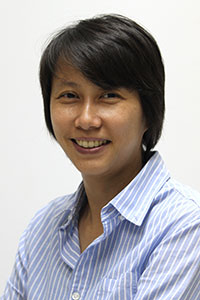The removal of the leafy pradu trees along the road around the Grand Palace has triggered an avalanche of shock and anger. But this project, which has been touted as a landscape development project for tourism, hardly surprised me.
Last weekend, when netizens shared pictures of an uprooted tree opposite the main entrance of the Grand Palace, I felt a bit sad that the area will lose this much-needed shade.
Not to mention the eyesores! Without the trees, a familiar sight to visitors, there are only concrete structures as far as one can see. Can you imagine the heat when strolling in the area on a sunny day?
Well, how can I complain? I live in a city where policymakers see trees, nature, and even people, as obstacles to infrastructure development. Most of the time, they simply place form over function.
The lush trees -- 34 altogether -- are being removed to pave the way for the construction of two underground tunnels, 37 and 96 metres long, across Na Phra Lan Road, and another 90-metre tunnel under Maharaj Road.
The project, which will create some 8,000 square metres of underground space that features pedestrian crossings and washrooms, received the green light from Deputy Prime Minister Prawit Wongsuwon last November.
This is yet another proof that development in Thailand means trees will be uprooted -- at least in some sense.
Information on the fate of the pradu trees is scarce and confusing.
Initially, we were told the unlucky trees would go to a plant nursery somewhere forever. Later, the authorities appeared to make a U-turn, saying the trees would only be temporarily transferred and would be replanted after the tunnels are finished in about two years.
I suspect the authorities had wanted to remove the trees permanently, but heavy social pressure forced them to backtrack on the plan.
Readers may wonder -- why can't we just build underground facilities without sacrificing mature trees? Or why can't we have the facilities built near Sanam Luang, under the area which is already used as a tourist drop-off?
A source told me that the development, which costs over 1.2 billion baht, was actually meant to solve the shortage of toilets in the area and the underground crossings were an afterthought.
It is indeed hard to find a spot above ground to build such facilities in the Old Town, so that is understandable.
It is also impossible to build the facilities under Sanam Luang because the ground is regularly used for official ceremonies and cannot be closed that long.
The chosen location is perfect, the source said, because it's right at the entrance of the Grand Palace.
I understand people need toilets, but can't we really have them somewhere within walking distance? Or don't we have any technology or means to spare those trees while construction is underway?
I talked to landscape architecture lecturer, Pranisa Boonkham from Thammasat University, who said that trees and tunnels can get along just fine.
Technically, we don't need to uproot the trees during construction, she said. But doing so requires good planning and a commitment to keeping the city green. The budget will soar, and the projects cannot be executed as quickly.
The academic, who also represents the Thai Association of Landscape Architects, said if the main goal of the project is only to solve a toilet shortage around the tourist site, then what the city is doing is a success. But should we be happy with that? I think not.
The trees, half a century old, are more than worth preserving in a barren city like Bangkok.
However, since the trees have already been uprooted, Ms Pranisa suggested a better solution. As mature trees are not supposed to be moved too often, they should get a new home -- either in a park or forest -- where the trees can really grow without having to tolerate heavy traffic.
The locations right above the tunnels should be planted with younger trees, she said.
A number of trees, 10- to 15-centimetre in diameter, should be prepared to replace the uprooted pradu.
This way, the high costs of a second relocation can be saved and the area will see younger and healthier trees -- making it not only ideal, but also practical.
If you buy the city's idea that the trees must be uprooted, take a look at the MRT's extended Blue Line that crosses 30 metres underneath the Chao Phraya River linking Sanam Chai and Itsaraphap stations.
To build it, the MRT didn't recruit Moses to part the river!
